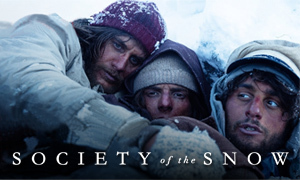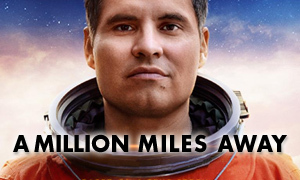Togo: History vs. Hollywood
| REEL FACE: | REAL FACE: |
Diesel
| Togo
Born: October 17, 1913 Birthplace: Little Creek, Alaska (near Nome) Death: December 5, 1929, Poland Spring, Maine, USA (euthanization to ease passing) |
Willem Dafoe
Born: July 22, 1955 Birthplace: Appleton, Wisconsin, USA | Leonhard Seppala
Born: September 14, 1877 Birthplace: Skibotn, Storfjord, Norway Death: January 28, 1967, Seattle, Washington, USA |
Julianne Nicholson
Born: July 1, 1971 Birthplace: Medford, Massachusetts, USA | Constance Seppala
Born: December 16, 1884 Birthplace: Antwerpen, Belgium Death: April 16, 1969, Seattle, Washington, USA |
Michael McElhatton
Born: 1963 Birthplace: Terenure, Dublin, Ireland | Jafet Lindeberg
Born: September 12, 1874 Birthplace: Kvænangen, Norway Death: November 5, 1962, San Francisco, California, USA Seppala's Friend and Employer |
Richard Dormer
Born: November 11, 1969 Birthplace: Portadown, County Armagh, Northern Ireland, UK | Dr. Curtis Welch
Born: abt 1875 Birthplace: Connecticut Nome Town Doctor |
Was Togo sick when he was a young puppy?
Yes. The Togo true story reveals that as a young puppy Togo required excessive care from Leonhard Seppala's wife Constance. Early on, it was believed that the individual attention led to his rowdiness and mischievous behavior.
Where does the name Togo come from?
Willem Dafoe's character states in the movie that Togo was named after the underdog Japanese admiral and naval hero Tōgō Heihachirō. In researching the Togo fact vs. fiction, we learned that this is indeed true. Admiral Heihachirō was known for his success and victories in the Russo-Japanese War (1904–1905), among other conflicts.
Did the real Togo jump through a glass window to get back to Leonhard?
Yes. The true story behind Togo confirms that as a result of his relatively small size, illness, and bad behavior as a young puppy, Leonhard Seppala decided that Togo was not sled dog material and gave him away to be a house pet when he was six months old. The real Togo spent a few weeks at his new home before he jumped through the glass of a shut window and ran several miles back to Leonhard's kennel. Impressed, Leonhard decided to keep him.
Why was Leonhard Seppala chosen to help with the 1925 Serum Run to Nome?
Leonhard Seppala's experience and fame as a champion dog musher are why he was chosen to drive a sled dog team in the Serum Run. Seppala had immigrated to Alaska from Norway when his friend Jafet Lindeberg convinced him to come work for the mining company he started in Nome. Seppala became interested in dog sledding during his first winter in Alaska when he became a sled dog driver for Lindeberg's company. In 1914, he competed in the All Alaska Sweepstakes, a sled dog race. His career took off when he won the Sweepstakes the following year, beating experienced musher Scotty Allan by two hours. The victory is depicted as a flashback in the movie. Seppala also won the All Alaska Sweepstakes in 1916 and 1917, before the race was canceled until 1983.
Was the diphtheria threat to Nome really as bad as it's portrayed in the movie?
Yes. In the winter of 1924-1925, a diphtheria epidemic was threatening the town of Nome, located on the southern Seward Peninsula on the northwestern coast of Alaska. After four children took ill and died, the town's only doctor, Curtis Welch, eventually diagnosed diphtheria in three-year-old Billy Barnett, who died just two weeks after the onset of symptoms. The next day a seven-year-old girl was diagnosed and Welch tried to give her expired antitoxin (all that was on hand) in hopes that it would work, but she died several hours later. Welch had ordered more diphtheria antitoxin from the health commissioner in Juneau, but the port closed for the winter before the shipment arrived. Desperate, he sent radiotelegrams to the other major towns in Alaska and one to the U.S. Public Health Service in Washington, D.C., pleading for help. His telegram is pictured below.
Even with a quarantine in place, more than 20 people had been diagnosed with diphtheria and many more were at risk. The small amount of diphtheria antitoxin (8,000 units) Welch had on hand had expired and had become ineffective. Without a fresh batch of antitoxin, it was estimated that the disease would claim the area's entire population of approximately 10,000 souls.
Why didn't they fly the diphtheria antitoxin to Nome?
Flying was relatively new at the time and winter flight was still largely untested. It was only in the previous February that the first airmail flight in Alaska took place. Nome is clear across the state from Fairbanks, a flight distance of approximately 521 miles. The only planes they had were water-cooled aircraft from World War I, which didn't perform well in cold weather. Temperatures across the Interior were at 20-year lows. It was −50 °F in Fairbanks. The polar night also meant that there were limited hours of daylight to fly.
Why is diphtheria so deadly?
Diphtheria is a bacterial infection caused by exposure to the bacterium Corynebacterium diphtheriae, often by way of direct contact or through droplets in the air (sneezing or coughing). Symptoms usually begin two to five days after exposure and include a fever, sore throat and weakness. Diphtheria can attack healthy tissues in the respiratory system. Dead tissue then builds up in the throat or nose, forming a thick, gray coating dubbed a "pseudomembrane". This membrane (visible below over a patient's tonsils) covers healthy tissues in the throat, nose, tonsils and voice box, causing a croup-like cough, as well as severe difficulty breathing and swallowing. This can lead to death from asphyxiation. In advanced cases, diphtheria can also cause the neck to swell, in part due to swollen lymph nodes, resulting in a condition nicknamed "bull neck" (visible below).
Diphtheria can affect other organs if the toxin spreads through the blood. This can result in deadly complications of the heart, kidneys and nervous system. Heart failure, kidney failure, and paralysis are possible, and as many as 50% of those who are not treated die.
Did Leonhard Seppala and his wife have any children?
Yes. In researching the Togo true story, we learned that in real life Leonhard and his wife Constance had a daughter named Sigrid, who was eight years old at the time of the 1925 Serum Run to Nome. She too was at risk of being stricken with diphtheria.
How old was Leonhard Seppala's dog Togo when they embarked on the Serum Run?
When Leonhard Seppala and his lead sled dog Togo began the relay to transport diphtheria antitoxin to Nome, Togo was 12 years old, which is practically ancient for a sled dog. By that time, he had already been a lead sled dog for seven years.
What dog portrayed Togo in the movie?
As we investigated the Togo fact vs. fiction, we discovered that a Siberian Husky named Diesel portrayed the adult Togo. He had two stunt doubles, Hugo and Mackey, who were lead sled dogs from Snowy Owl Sled Dog Tours in Alberta. Snowy Owl provided all of the adult sled dogs used in the movie. Various dogs portrayed Togo as a puppy, including RipTide (Ripley) from Evelyn Ely's pack. The dogs who play Togo throughout the film often needed to be colored to match Diesel, the adult Togo.
How far did the sled dog teams travel with the serum?
The diphtheria serum was first transported by train from Anchorage northward to Nenana, Alaska. A relay of 20 sled dog teams then traveled a distance of 674 miles from Nenana to Nome. Leonhard Seppala and his sled dog team led by Togo traveled 340 miles roundtrip to pick up the serum and start bringing it back, eventually handing it off to Charlie Olson's team.
Were the conditions Leonhard Seppala and Togo traveled in really as bad as what's seen in the movie?
To a large degree, yes. Leonhard Seppala and his sled dog team led by Togo spent three days traveling 170 miles from Nome to Shaktoolik to pick up the diphtheria serum on January 31, 1925. The true story behind Togo reveals that the temperature was approximately −30 °F with gale force winds making it feel like −85 °F. Like in the film, Seppala almost missed musher Henry Ivanoff, who had been in Shaktoolik in case Seppala didn't arrive. Ivanoff had just left Shaktoolik with the serum. They encountered each other while Ivanoff was untangling his team on a trail outside of town, at which time Seppala took possession of the serum. He immediately began the trek back across Norton Sound without pausing to rest.
The conditions on the return trip were even worse. Seppala and his team again traversed the exposed open ice of Norton Sound, which was breaking up. This seems to be exaggerated a bit for the film. The darkness and a blizzard also made it impossible for Leonhard Seppala to see where he was going. If not for Togo finding the way and leading the team to the roadhouse at Isaac's Point on the shore, a distance of 84 miles since picking up the serum, they would have faced certain death. It was there they rested and slept for six hours before continuing their journey at 2 a.m., heading into another bad storm.
During the night the temperature dropped to −40 °F with 65 mph winds. They headed inland and climbed 5,000 feet to cross Little McKinley Mountain. After coming partway down the trail, they reached the roadhouse in Golovin, completing their leg of the relay. Seppala gave the 300,240 units of serum to Charlie Olson and his sled dog team. Olsen in turn later handed it off to Gunnar Kaasen, who completed the final stretch with his dog Balto leading his team.
Did any mushers or sled dogs die during the Serum Run?
Many of the 150 dogs who took part in the 1925 Serum Run to Nome lost their lives, mainly due to exposure. While none of the mushers lost their lives, several of them succumbed to frostbite, including Charlie Olson and Gunnar Kaasen, who completed the final two legs of the journey. Kaasen, who was in charge of Balto, suffered frostbite to his fingers after strong winds blew his sled over. The bundle containing the serum was knocked out and he dug with his bare hands in the snow to find it.
What colors was Togo?
After he reached his adult weight of only about 48 pounds, the real Togo had a brown, black, and gray coat that made him look constantly dirty. While only black and white photos exist of Togo when he was alive, Leonhard Seppala had him custom mounted after his death at age 16. His mounted skin is currently on display at the Iditarod Trail Sled Dog Race Headquarters museum in Wasilla, Alaska. History vs. Hollywood visited the headquarters in 2013 and captured the photo of Togo displayed below. His skeleton is in the Peabody Museum of Natural History's collection at Yale University.
Was Togo unfairly overlooked by the press, with credit instead going to Balto, the lead dog who finished the Serum Run?
Yes. Togo was the true champion of the Serum Run. His journey through white-out storms and twice across the unforgiving Norton Sound was by far the most perilous leg of the run. It was also the longest by roughly 200 miles. Despite doing most of the work, the credit instead largely went to the Gunnar Kaasen-controlled sled dog Balto, who completed the last, 55-mile stretch of the Serum Run through a blizzard. Balto was given a statue in New York City's Central Park later that year and Hollywood immediately turned Balto's journey into a movie titled Balto's Race to Nome. Gunnar Kaasen and Balto would come out on stage after each screening and receive great applause. Balto later inspired a 1995 animated movie that was loosely based on his story.
On an interesting side note, despite Gunnar Kaasen being the musher that guided Balto, Leonhard Seppala owned both Balto and Togo. This is accurately depicted in the movie. Seppala felt that Balto was not good enough to put on his own team for the Serum Run. In fact, Gunnar Kaasen had to pair Balto with another lead dog, Fox, for the final push into Nome. It's true that newspapers didn't mention Fox because they felt the dog's name would be confusing.
Disappointed over the media's failure to acknowledge Togo's heroism and accomplishment, according to Gay Salisbury's bestselling book on the serum relay, The Cruelest Miles, Seppala commented, "It was almost more than I could bear when the newspaper dog Balto received a statue for his 'glorious achievements'."
This isn't to say that Togo was completely ignored. Seppala, Togo, and a team of dogs went on a victory tour in the lower 48, making various stops, including in Seattle, California and New York City. Seppala and Togo were featured in a Lucky Strike cigarette campaign. A chewing gum collector card was also issued featuring the pair. The card can be found on eBay or through various collectors.
Did Togo live out the rest of his life with Leonhard Seppala?
No. Unlike the movie, Leonhard Seppala eventually decided that he wanted Togo to live out the remainder of his life in comfort. He said goodbye to Togo and gave the dog to fellow sled dog musher Elizabeth Ricker, who lived in Maine. "It was sad parting on a cold, gray March morning," recalled Seppala, "when Togo raised a small paw to my knee as if questioning why he was not going along with me. I never had a better dog than Togo. His stamina, loyalty, and intelligence could not be improved upon. Togo was the best dog that ever traveled the Alaska trail." It's true that before he died Togo sired puppies. Elizabeth Ricker and Leonhard Seppala established a kennel at Poland Spring Resort (which her husband's family operated) to breed Seppala sled dogs. Still today, mushers and Husky owners try to trace their dogs' lineage back to Togo. To learn more about the final years of Togo's life, watch our video How Disney Changed Togo's Ending.







